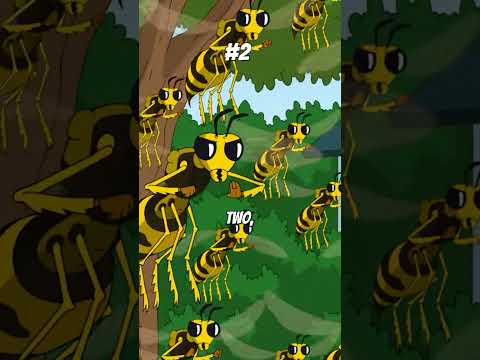Exciting Career: Animator Job Description & Salary

Animator Job Description Template
Animator is a professional who creates animations and visual effects for various media platforms such as films, television shows, video games, and advertisements. They use computer software and other tools to bring characters, objects, and environments to life through movement and action. The main responsibilities of an animator include conceptualizing and developing storyboards, character designs, and animation sequences. They collaborate with a team of artists, designers, and directors to ensure that the animation aligns with the overall vision of the project. Animators also use their creativity and technical skills to create visually appealing and realistic animations. One important skill that an animator must possess is a strong understanding of animation principles. These principles include timing, spacing, weight, and anticipation. By applying these principles, animators can create animations that are visually appealing and believable. Additionally, animators must have attention to detail as they need to carefully craft each frame of an animation to ensure smooth and fluid movement. Another crucial aspect of being an animator is the ability to work under pressure and meet tight deadlines. Animations often require a significant amount of time and effort to complete, so animators must be able to manage their time effectively and meet project milestones. Overall, an animator plays a vital role in the creation of animations and visual effects, bringing imagination and creativity to life through the power of animation.Animator Responsibilities
Animator Requirements
How Much Does A Animator Make?
Animator Salary
| Job Position | Salary |
|---|---|
| Junior Animator | $40,000 – $60,000 per year |
| Mid-Level Animator | $60,000 – $80,000 per year |
| Senior Animator | $80,000 – $100,000 per year |
An animator’s salary can vary depending on their level of experience and the company they work for. Junior animators typically earn between $40,000 and $60,000 per year. As they gain more experience and expertise, mid-level animators can expect to earn between $60,000 and $80,000 per year. Senior animators, who have extensive experience and may also take on leadership roles, can earn between $80,000 and $100,000 per year. It’s important to note that these salary ranges are just estimates and can vary based on factors such as location, industry, and individual negotiation skills. Animators who work in major animation studios or high-paying industries like film and gaming may have the potential to earn higher salaries compared to those working in smaller studios or less lucrative industries. Additionally, animators may also have opportunities for additional income through freelance work or by creating their own animated projects. Overall, animators can have a rewarding career both creatively and financially, with the potential for growth and advancement in the field.
Animator Salaries by Country
Top Paying Countries for Animator
| Country | Average Salary (USD) |
|---|---|
| United States | 75,000 |
| Canada | 65,000 |
| Australia | 60,000 |
| United Kingdom | 50,000 |
| Germany | 45,000 |
An animator’s salary can vary greatly depending on the country they work in. According to recent data, the top paying countries for animators are the United States, Canada, Australia, United Kingdom, and Germany. In the United States, animators can expect an average salary of $75,000, while in Canada it is around $65,000. Australia offers an average salary of $60,000, followed by the United Kingdom with $50,000, and Germany with $45,000. These figures indicate the potential earning opportunities for animators in different countries, with the United States being the most lucrative market for this profession.
A video on the topic Animator
Video Source : Screen AddictsInterview Questions for Animator
1. What sparked your interest in becoming an animator?
I have always been fascinated by the art of bringing characters and stories to life through animation. Growing up, I was captivated by animated movies and TV shows, and I knew from a young age that I wanted to be a part of creating that magic.
2. How did you acquire the necessary skills and education to become an animator?
I pursued a degree in Animation from a reputable art school, where I learned the fundamentals of animation techniques, character design, storytelling, and software skills. Additionally, I continuously honed my skills through personal projects, workshops, and online tutorials.
3. Can you describe your creative process as an animator?
My creative process begins with thoroughly understanding the project brief and the vision of the director or client. I then brainstorm ideas, create storyboards, and develop character designs. Once the foundation is laid, I proceed to animate the characters, paying close attention to details such as timing, movement, and expressions.
4. What software and tools do you use for animation?
I am proficient in using industry-standard animation software such as Adobe Animate, Autodesk Maya, and Toon Boom Harmony. I also utilize various tools like Wacom tablets for digital drawing and animation, as well as other software plugins and scripts to enhance my workflow.
5. How do you approach collaborating with other members of a creative team?
Collaboration is essential in animation, as it involves teamwork and coordination among different departments. I actively participate in meetings, listen to feedback, and contribute my ideas and expertise to ensure the overall vision is achieved. Effective communication and the ability to work well within a team are crucial in delivering high-quality animation.
6. How do you stay updated with the latest trends and techniques in animation?
I am always eager to learn and stay updated with the latest trends and techniques in animation. I regularly attend industry conferences, workshops, and webinars. I also follow influential animators and studios on social media platforms, read animation blogs and books, and actively engage in online communities to exchange knowledge and learn from others.
7. Can you provide an example of a challenging project you worked on as an animator?
One challenging project I worked on was a complex action sequence for an animated film. It required meticulous attention to detail, realistic physics, and dynamic camera movements. The project demanded extensive research, planning, and multiple iterations to achieve the desired impact and fluidity in the animation.
8. How do you handle creative differences or feedback from clients or directors?
I approach creative differences or feedback with an open mind and a willingness to collaborate. I actively listen to the concerns and suggestions of clients or directors and see it as an opportunity to improve the animation. I strive to find a common ground that aligns with the project’s objectives while still maintaining the integrity of the animation.
9. What advice would you give to aspiring animators?
My advice would be to practice consistently, be open to learning, and never stop experimenting. Animation is a constantly evolving field, so it’s important to stay curious and adapt to new technologies and techniques. Building a strong portfolio and networking with industry professionals can also greatly enhance career opportunities.
10. What do you find most rewarding about being an animator?
The most rewarding aspect of being an animator is seeing the final product come to life and evoke emotions in the audience. It’s incredibly fulfilling to know that my work can entertain, inspire, and leave a lasting impact on people. Additionally, the collaborative nature of animation allows me to work with talented individuals and be part of a creative community.






